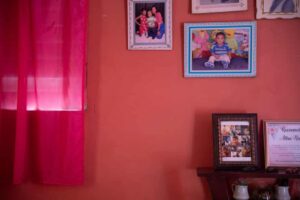
One of the walls in Alba Nely Peña’s front room is adorned with graduation photos of her children. She gave birth to three boys and three girls, but only five smiling faces are on display in her house on the outskirts of Santo Domingo, the capital of the Dominican Republic.
My youngest one died. I took her photo down because I can’t bear the pain,” she says, before going into a back room and digging out a framed collage of photos of her daughter. On it are written the words: “We will always remember you, Rossa.”
Rossa Nelly Aquino died in June 2013, aged 20, a couple of days after getting an abortion in an illegal clinic not far from where she lived with her mother. She kept the procedure a secret from her family and only revealed what had happened to her sister, Heidy Valoy, moments before she died.
“What my sister did in that clandestine clinic was to leave us, her family, with a laceration for the rest of our lives. Our family is incomplete,” says Valoy. “I want the medical community to pay more attention to these clinics and to dismantle them.”
Abortion in the Dominican Republic is illegal in all circumstances, including rape and incest. Abortions are not allowed to save a woman’s life or when the foetus can’t survive outside the womb. The law has been in effect since 1884. Women face up to two years in prison for having an abortion, while the penalties for doctors or midwives range from five to 20 years.
Despite the law, there is a thriving and profitable business in providing abortions. In towns across the country, there is usually at least one clandestine clinic known to offer abortions in secret. These clinics are often disguised as medical centres offering ultrasounds, for example. Others have no signage at all, like the one sandwiched between an ice-cream shop and a sports centre, and painted in bright colours with flower murals on the walls, in a town in the middle of the Caribbean country.
